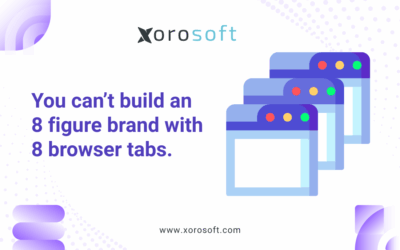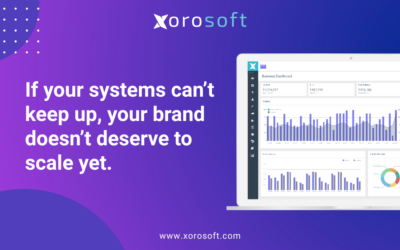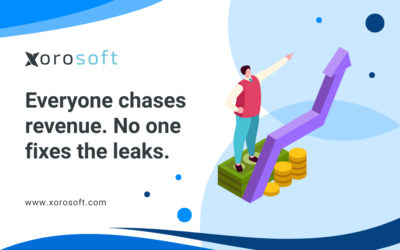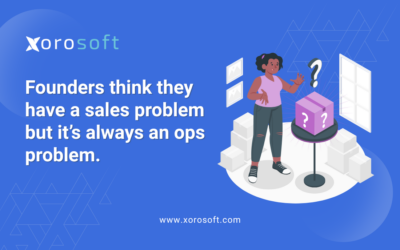
Why Seamless ERP Integration Matters for Fast-Growing Brands
Seamless ERP integration should be the first operational decision when a DTC or omnichannel brand begins to scale. Because systems multiply as you grow, fragmentation creeps in immediately. However, when your tools connect from day one, the business stays simple, fast, and predictable.
You built the brand to grow, not to maintain spreadsheets. Yet, as channels, warehouses, and partners expand, the stack fragments. Consequently, Shopify manages sales, a 3PL handles fulfillment, and accounting lives in a separate system. Each platform performs well alone; nevertheless, without unification they create friction. Therefore, you lose time to reconciliation, reports drift out of sync, and inventory updates lag behind demand. As a result, leaders spend hours fixing problems instead of driving growth.
Moreover, customers feel the ripple effects through delayed shipments and stockouts. In addition, finance carries uncertainty that slows cash decisions. Thus, founders who integrate early protect focus, protect cash, and protect momentum.
The Hidden Cost of Poor ERP Integration in Ecommerce
When systems don’t talk, small inefficiencies appear harmless. However, they accumulate quickly and compound every week. Consequently, the business absorbs hidden costs that mask true performance.
-
Disconnected data: Shopify, your WMS, and accounting each hold a different “truth.” Therefore, someone must copy and paste.
-
Lagging visibility: Sales update instantly; meanwhile, inventory may trail by hours. Consequently, real-time stock counts feel unreliable.
-
Manual reconciliation: Finance spends cycles matching sales, shipments, and invoices; as a result, closing takes longer.
-
Operational misalignment: Ops, finance, and fulfillment operate from different numbers. Therefore, meetings multiply and confidence falls.
-
Rising overhead: Instead of automating, teams add headcount to patch gaps; consequently, costs climb without adding capacity.
Moreover, every new channel, warehouse, or promotion amplifies these frictions. Ultimately, growth stalls not because of demand, but because of drag.
How Seamless ERP Integration Transforms Operations
Once your systems sync in real time, work accelerates. Orders flow automatically, data updates instantly, and every team sees a single source of truth. Therefore, decisions happen faster, errors shrink, and cash returns sooner.
| Metric | Before Integration | After Integration |
|---|---|---|
| Pick Accuracy | 93% | 99.7% |
| Order Cycle Time | 36 hours | 8 hours |
| Cash Conversion | 45 days | 28 days |
| Inventory Turnover | 4x / year | 6.2x / year |
These results come from mid-market brands that implemented ERP for ecommerce to unify Shopify, fulfillment, and accounting. Moreover, the improvements persist because the process removes manual steps rather than adding people.
A Brand Example That Shows the Payoff in Weeks
Caldera Apparel hit a wall at $8M. Initially, their team reconciled Shopify orders, 3PL shipments, and QuickBooks invoices by hand. Consequently, the ops lead lost 20 hours per week to admin, while finance waited for certainty.
After deploying seamless ERP integration, changes appeared immediately. Inventory synced across Shopify and the 3PL; furthermore, invoices generated the moment orders shipped. Therefore, month-end no longer required fire drills, and leaders trusted live numbers.
Within 60 days:
-
Pick accuracy improved by 6.4%; moreover, mis-picks became rare.
-
Cash conversion dropped from 45 to 31 days; consequently, marketing gained budget.
-
One full-time ops role shifted to channel expansion; thus, growth accelerated without extra cost.
This before/after illustrates a common pattern: remove handoffs, then redeploy people to growth.
A Practical Playbook You Can Run Without a Big IT Project
You don’t need a massive overhaul. Instead, you need a focused sequence that builds trust step by step. Therefore, follow this seven-part framework to reach operational calm.
Map Your Current Data Flows
Begin with visibility. First, sketch the sales-to-cash journey—order, pick, pack, ship, invoice, and payment. Then, mark every human touchpoint. Consequently, bottlenecks surface quickly.
Goal: Reveal hidden blockers.
Action: Diagram flows; list manual handoffs.
Metric: Handoffs per order.
Identify the Choke Points
Next, isolate the delays. For example, is inventory sync late? Is order routing brittle? Is invoicing slow? Because the list can grow long, prioritize by impact. Therefore, tackle the steps that affect customers and cash first.
Goal: Quantify delay sources.
Action: Time each step end-to-end.
Metric: Hours between updates.
Choose an ERP That Unifies the Stack
After you know where pain lives, select an ERP with Shopify ERP integration, WMS connectors, and accounting sync. Moreover, confirm that the platform handles your SKU complexity and multi-warehouse logic.
Goal: Centralize operational truth.
Action: Compare options and run demos.
Metric: % of systems covered natively.
Pilot One Channel to Prove Value Fast
Start controlled. For example, connect Shopify → ERP → 3PL first. Then validate stock sync, order status, and invoicing. Consequently, you de-risk rollout and build team confidence.
Goal: Validate data accuracy at speed.
Action: Run a 2-week pilot.
Metric: Pick accuracy; order cycle time.
Automate Financial and Inventory Syncs
Next, wire the ERP to accounting and inventory. Therefore, shipped orders post invoices automatically, and stock adjusts in real time. As a result, reconciliation disappears, and month-end shortens.
Goal: Remove manual reconciliation.
Action: Turn on auto-posting and stock updates.
Metric: Finance/ops hours saved per week.
Train and Empower the Team
Technology lands only when people trust it. Consequently, hold short workshops on “How to trust ERP data” and “How to handle exceptions.” Moreover, document simple playbooks that anyone can follow.
Goal: Build confidence and consistency.
Action: Run training; publish quick guides.
Metric: Fewer data-correction tickets.
Review Performance Every Week and Keep Iterating
Finally, keep score. Therefore, review cycle time, cash conversion, and inventory turnover weekly against your baseline. Moreover, celebrate wins and remove new bottlenecks fast. Thus, small gains compound.
Goal: Maintain momentum.
Action: Weekly KPI stand-up.
Metric: Trend vs. baseline.
A Two-Week Schedule That Builds Momentum Without Chaos
| Day | Focus | Outcome |
|---|---|---|
| 1–2 | Map systems and workflows | Clear view of gaps |
| 3–4 | Compare ERP options on G2 | Shortlist 2–3 platforms |
| 5 | Test a Shopify ERP app | Confirm integration fit |
| 6–7 | Set measurable goals | Establish KPI baselines |
| 8–10 | Run the single-channel pilot | Validate real-time accuracy |
| 11–14 | Train ops and finance | Team confidence and adoption |
| 15 | Review results | Confirm time saved and ROI |
Because the schedule is short, teams stay focused; consequently, momentum rises quickly.
What Operators Ask Before They Start
Do we need a developer?
Usually not. Modern platforms include native connectors and no-code configuration. Therefore, operations or finance can handle most steps with light IT review.
How long does rollout take?
A focused team can move from pilot to full integration in 30–45 days. Moreover, standardized systems accelerate the timeline.
What if our 3PL uses a custom WMS?
Most ERPs provide API or EDI adapters. Therefore, start with a one-way sync—orders out, tracking in—then progress to real-time updates.
Is this overkill for a $5M brand?
No. ERP isn’t about size; instead, it’s about complexity. Consequently, if the team spends 10+ hours a week reconciling data, integration delivers immediate ROI.
Why Integrated Operations Create Calm, Speed, and Confidence
Ultimately, seamless ERP integration is not about adding software; rather, it’s about removing chaos. When every system speaks the same language, you decide faster, ship cleaner, and forecast with confidence. Therefore, the business earns back time and converts that time into growth.
Moreover, customers receive accurate ETAs, support sees real-time status, and finance closes the books without drama. Consequently, leaders reclaim attention for brand, product, and community. Thus, integration pays back in hours, cash, and morale.
Tools and Pages That Help You Take the First Step
To move now, compare options and see working demos.
-
Explore top-rated ERP systems on G2’s “Easiest to Use” list.
-
Review the Xorosoft ERP app for Shopify to understand a live connector.
-
Then guide readers to your internal pages for action:
Search
Categories
- ACCOUNTING & FINANCIALS 62
- Business 1
- E-COMMERCE & CHANNEL INTEGRATIONS 72
- ECommerce 3
- ERP 822
- FINANCE & ACCOUNTING 9
- INVENTORY & OPERATIONS 12
- Inventory Management Software 1
- OPERATIONS & INVENTORY 67
- PROCUREMENT & SUPPLY CHAIN 9
- PURCHASING & SUPPLY CHAIN 62
- Software 1
- WAREHOUSE & FULFILLMENT WMS 64
- WMS & FULFILLMENT 12
Recent Posts
-
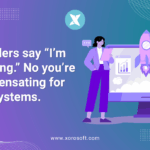 Founders say “I’m grinding.” No — you’re compensating for bad systems.
Founders say “I’m grinding.” No — you’re compensating for bad systems. -
 You can’t build an 8-figure brand with 8 browser tabs
You can’t build an 8-figure brand with 8 browser tabs -
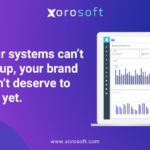 If your systems can’t keep up, your brand doesn’t deserve to scale yet
If your systems can’t keep up, your brand doesn’t deserve to scale yet -
 Everyone chases revenue. No one fixes the leaks.
Everyone chases revenue. No one fixes the leaks. -
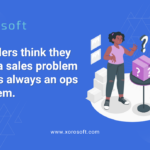 Founders think they have a sales problem — but it’s always an ops problem
Founders think they have a sales problem — but it’s always an ops problem

